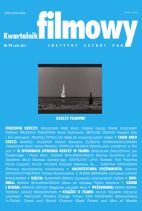"Forma jest pustką". O przedmiotach pustego sensu w filmach Yasujiro Ozu i Jima Jarmuscha
"The Form is Emptiness". Objects Empty of Meaning in the Films of Yasujiro Ozu and Jim Jarmusch
Author(s): Mateusz WilkońSubject(s): Theatre, Dance, Performing Arts
Published by: Instytut Sztuki Polskiej Akademii Nauk
Keywords: Ozu Yasujiro; Jarmusch Jim
Summary/Abstract: There exist films, that in opposite to fragmented shots of western movies, release the viewer from the necessity of maintaining a constant intellectual vigilance. For example in the films of Yasujiro Ozu things are not weighted with meaning and so they evoke the spirit of Zen. They are objects empty of meaning. The Japanese director, by placing props that are unrelated to the storyline, points to the formal aspect of his work, and gives focus to their “being”. The aim is to “dilute the reality” in the fashion of Zen, and to introduce harmony into the shot, as a necessary element of the emptiness of mu. Ozu’s films are dominated by everyday, common things, that are not formally spectacular, nor are they fetishised in the spirit of Duchamp. Jim Jarmusch is a great fan of Ozu’s work and looks there for inspiration. He is also fascinated by the Buddhist culture of Zen, and he places elements of this culture in all his films. His work tempts the viewer to over-analyze and look for a meaning that has already been negated. The bait in the trap of over-interpretation are the objects empty of meaning, which only seem to mean something, but in fact do not carry any deeper ideas.
Journal: Kwartalnik Filmowy
- Issue Year: 2011
- Issue No: 74
- Page Range: 31-49
- Page Count: 19
- Language: Polish

